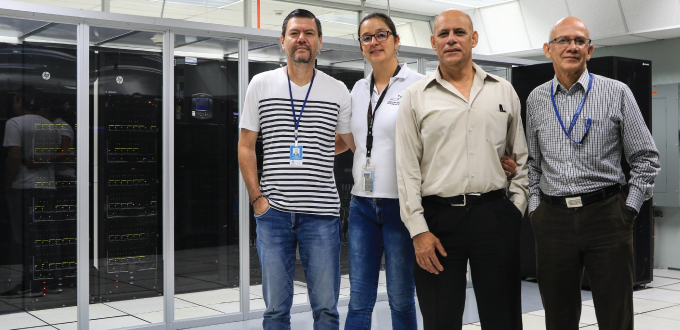Setting an Example: IPv6 Deployment at the University of Costa Rica
30/07/2019

The University of Costa Rica (UCR) continues to make progress in their IPv6 deployment plan, which it has been implementing for three and a half years with excellent results.
After investing and training its human resources, the University of Costa Rica upgraded its technological platform to be able to seamlessly deploy IPv6, offer new services and accompany the growth of the Internet.
Rebeca Esquivel Flores, Coordinator of the Communications Management Department of the University of Costa Rica, highlighted the support they received from LACNIC throughout this process and noted that the transformation as a whole had been extremely positive.
Why did the University of Costa Rica decide to implement a pilot plan for IPv6 deployment?
We believe that two of the pillars of the University are research and teaching. Many other universities and research centers use IPv6 in their information and technology services, and these are of great value to us. Using IPv6 makes their content more readily accessible. The same goes for the content that students use for their academic work. Many teachers and researchers work on projects together with colleagues in different universities around the country and the world, which is why they use the Red Clara link, and much of this traffic is over IPv6. Students are among the greatest users of RedUCR and they use a number of services and IPv6-compatible content hosted on servers that are part of the network. Equally important is the fact that it has been proven that the use of IPv6 improves users’ browsing experience, especially because it reduces the number of hops required to reach the destination, making data traffic appear to be faster.
The University is also working on a series of innovation projects involving the IoT, for example, the installation of sensors in our own agriculture farms, where we experiment with different irrigation, fertilization and self-growing systems. Every device we connect for these projects requires an IP address, so the lack IPv4 addresses led us to solve this problem by using the IPv6 protocol.
Another thing worth noting is that the University has always been at the forefront of telecommunications, infrastructure, data processing, and the creation of knowledge. So, the implementation of this new protocol represents an improvement on something on which all of these activities are built, namely, RedUCR, the network that transports our data and communications
What steps did you complete before actually deploying IPv6, particularly with regards to your ICT equipment and employees?
First, even though we understand that in the early stages the protocol must coexist with IPv4, we planned all the stages that would need to be completed to fully migrate to IPv6.
Once the plan was ready, we made an inventory of the communication equipment that are part of University of Costa Rica’s network. This led us to decide that it was necessary to replace many of these devices that did not support IPv6 and update the IOS software on many others.
Next, we began a gradual process of replacing the equipment, a process that has taken approximately three and a half years.
In parallel with the latter two steps, we provided training to our employees so that all the people in charge of RedUCR would be aware of the change and understand its importance and how it would be implemented.
Once this was done, with the help of Guillermo Cicileo, Head of Internet Infrastructure Research and Development at LACNIC, we implemented the deployment plan step-by-step so that the process would be successful.
Initially, UCR had a /48 prefix, the size LACNIC assigned to end users. However, after a meeting with Alejandro Acosta (R&D Coordinator at LACNIC) and taking advantage of the decision made in Uruguay to allow an organization to change its existing prefix once, we decided to obtain a /44.
What results did you achieve after implementing the early stages of your plan? How did your team react to the deployment of IPv6?
The results have been very positive. From a technical point of view, things have gone mostly according to plan and the few things that did not go as planned allowed us to gain experience to detect certain unpredictable behaviors, which we successfully corrected.
As for the professionals that are part of the group responsible for managing RedUCR, their reaction has been very positive: they are very open to change and willing to implement the project working as a team.
Have you noticed any improvements in terms of Internet access? Have you been able to improve the performance of your networks and connections?
Of course. One of our greatest success stories is our access to Google services, which are widely used in our University. Now these services can be reached faster and with fewer hops, resulting in better response times when searching for information. Another success story is our access to research networks via Red Clara.
What are the main challenges that your IPv6 deployment process had to overcome?
The main challenge I observed was the lack of information and progress in the migration to IPv6 at national level. However, with the help of organizations and individuals in other countries — for example, LACNIC — we have managed to make progress.